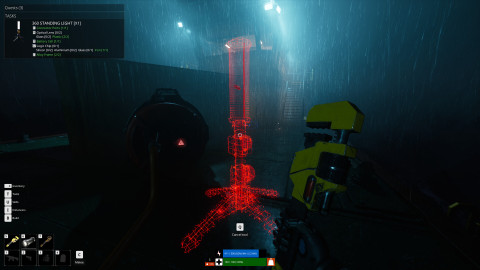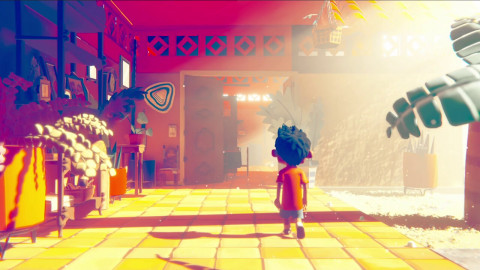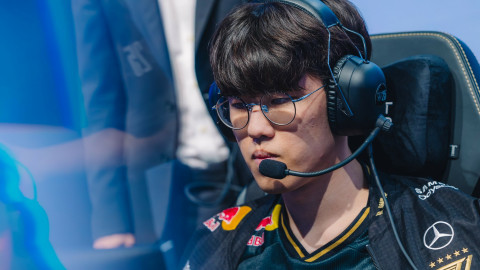Blockchain gathers transaction information in one place, creates a public ledger, and chains them all together. It cannot be forged as all ledgers are connected and shared with one another.
Blockchain, as part of the 4th Industrial Revolution, is already being adopted for financial transaction services, distribution services, and development areas. What then will happen when blockchain, one of the most fast-growing technologies of the modern revolution, is combined with gaming?
Generally speaking, current games do not and cannot adopt blockchain, because the traditional server-client database is working fine. However, blockchain can still innovate specific areas. This article aims to cover future possibilities and predictions involving blockchain and games. Being predictions, it is possible for them to be proven false once the technologies actually interact.
To better understand this article, blockchain-related terminology and general concepts can be found at this link.
Related: Blockchain and Gaming Chapter 1 - Understanding the concept

Change in the game ecosystem
Fundraising through the Initial Coin Offering (ICO)
Is it possible to be free from the restraints of capital?
Partially, yes. A company needs enough funds to make a game, whether it be AAA or independent. Normally, a developer makes a game using an investment, or their own money if no other options exist. Because of this, it sometimes becomes an issue when an investing company interferes with development. That’s how influential capital is.
Games made through the use of blockchain can be slightly free from this route because they can receive funds through the ICO. The ICO is a type of crowdfunding for the blockchain industry. A company introduces a number of scrips and raises funds by handing over the ownership of those scrips to interested parties. Ethereum succeeded in raising 1.8 million dollars with the ICO in 2014, and Waves raised 1.6 million dollars in 2016.
Investors proceed with an investment expecting that scrips will deliver the value to an upcoming environment. A developer distributes financial benefits to gamers for supporting the construction of the future community.
The biggest difference of the ICO compared to other existing investment and funding methods is that it sells assets, not ownership. The traditional corporations issue shares in advance and sell them at the designated price through venture capital (VC) funding or initial public offering (IPO). Shareholders claim voting rights that correlate to the number of shares they hold, thus the more shareholders there are, the less influence the founder can have in the company.
However, instead of selling their ownership, a company using blockchain sells their assets in the form of scrips they have issued through the ICO, and this can liberate the founders from severe interference by investors or management disputes. Moreover, the value of a scrip also increases as the value of a company grows, which can aid companies in their upward growth.
Aside from the VC, the only way to invest in IPO companies is the Angel Investment. However, it is extremely risky as the level of liquidity is very low. Also, investors encountered various international scrip and investment-related regulations due to geological limitations.
However, it is difficult to expect a solid VC network, and there is still the possibility that a scrip investment can degenerate into a “hip-shooting investment”.

A lifesaver for small-medium companies?
New options of growth and survival for small and medium-sized companies
It is anticipated that small-medium developers will be able to enhance their security with blockchain technology. In the public blockchain, transaction information in the network is encrypted and creates a digital ledger that is shared among users of that network. Each user of the network proceeds with verification under their agreement.
By making use of this, companies can create a security system at a relatively lower price while not needing major infrastructure that requires tremendous costs and personnel. In theory, they also don’t have to purchase a private firewall that they normally wouldn’t be able to afford.
Also, a payment service can be freely created. Even without a particular solution or platform, games with blockchain can check the transaction history on the network without any transaction management or payment institution. Further, micropayments also become available.
This is because blockchain is an architecture based on mutual trust which blocks denial of shared data.
Publication and album industries have reformed themselves as the internet era has progressed because copying music and other media has become much easier. Publishers, therefore, profited more than creators, an issue that can also be supplemented with blockchain. Game developers and copyright holders can use distributed ledgers and smart contract technologies, replace the existing copyright system, and enable package and digital asset transactions between individuals. They can accrue more benefits as a result.
Ultimately, this can become a new means of evaluating game developer’s assets. It can be used to check values with scrips, evaluate the market value, and attempt merging and acquisition.

Pioneer a new market and a new platform
Will the new network provide new opportunities?
Yes. The current gaming market is highly centralized. Apple has their own ecosystem, and Google has bulked up to be the biggest influence in the world. Steam is not much different. Apple and Google with their ecosystem are receiving 30% for a commission.
Blockchain technology combined with game platforms may be able to reduce commission and provide transparency to gamers who purchase game items. The basic concept is to allow customers to purchase digital items from one another - customer-to-customer. Digital products will act as a liquid asset; this is known as a P2P market escrow contract.
The Android stores are actively making under-the-table efforts to escape from the influence of Google. Their common slogan is “against Google”. Since Android runs in APK unlike Apple, they are using this to make their own platform.
The reason why Mark Zuckerberg, the CEO of Facebook, mentioned his company, Google, and Apple, along with blockchain and scrip, is centralization because it is the scrip economy that needs to be vitalized in order to decentralize the general system.
According to a report by Newzoo in 2017, 1.14 billion gamers in the Asian market made 51.2 billion dollars of profit. The number has increased by 9.2% YoY. This accounts for 50% of the total revenue of the global gaming industry. SEA is the fastest growing region in the world, aside from Korea, China, and Japan. Although the market in India has a great potential, not many people own a credit card or bank account, thus a check card is usually the only source of developers’ revenue. Payment is not freely done.
A market using blockchain can resolve the payment issue of big markets like SEA or Brazil. Moreover, it can also result in less or no commission with scrip compared to existing markets.

Entrance of Esports to the prediction market
Will Esports enter the prediction market with traditional sports and grow?
Yes. In fact, it is questionable whether Esports needs a lot of security to have a blockchain network to prevent any falsification.
It becomes a different story when it comes to sports and betting. Equity is the most crucial aspect for betting and casino. This equity does not involve fair opportunity and action, but fair funding, and blockchain is used to guarantee this equity. Simply speaking, it would improve the reliability of the platform.
This is because a smart contract, one of the blockchain’s features, is designed to encourage trust between data parties without any interference by a third party. This trusted and fair data can lead to an improved flow of betting and funding.
Another reason is that the blockchain cannot be deleted, unlike the current Oracle DB. It does not have the main subject that can be manipulated for stealing money and is safe from alteration to its probability and records. The traditional server-administrator-DB (and client) structure cannot have unconditional trust.
This leads to the prediction market. Economist Robin Hanson proposed a new term, futarchy, a mix of future and archy. A distributed prediction market using blockchain technology, where participants bet on results of an event, is already operating in the US. Sports betting sites including SteemSports, FirstBlood, and FansUnite, and DigiByte Gaming linked with Steam, League of Legends, and Counter-Strike: Global Offensive. They are thriving, and even lottery businesses like SmartBillions have appeared.
Though it’s growing at an extreme pace, blockchain is still in its early phase. Technology always advances with pornography, war, and betting.

Game assets in kind
Can a scrip turn into the key currency and move freely within the network or become materialized cash?
It is possible in theory, but there are many obstacles to overcome by law. Many people who play games often hear, “Playing games doesn’t give you money or anything like that.” Well, you do get some if you become a pro gamer, but it is very unlikely for ordinary people.
However, it can become possible with a blockchain network, because the network links different games in one place. Games have had their own economy so far - the currency in one game cannot be used in another game. There was an attempt of materializing the currency by intermediate websites, but it was very limited.
With blockchain, the funds can be transferred from game A to game B. Moreover, it can be exchanged with the real money. This opens a new frontier of creating value by playing games.
Of course, it conflicts with many elements of the current law system. For example, the idea of ownership by clause and violation of the current law related to a market would be disputed.
The Fair Trade Commission made an authoritative interpretation, stating that the ownership of in-game items is to a developer, with grounds that game items are part of the computer program copyright, and the price of game item transactions is not paid to a developer. They also determined that it is legal for a developer to prohibit cash transaction of items.
This is because a game item is not treated as a “real right”. The fundamental of a real right is that someone can have direct control over the object, requiring no action of others to claim it. Therefore, it is different from a bond that demands a deed by the debtor in order to realize the right.
In-game items are part of the developer’s copyright, and a user is granted the partial right of using those items. It is like transferring a bond. However, item intermediation is an act of transferring the bond owned by a developer to a transferee, creating a non-transferable bond by clause between parties. In other words, the user’s ownership of a game item cannot be acknowledged at this stage.
Another problem is the issue of evaluating value. It is not possible to know the value of a scrip you hold before blockchain is available. The only reason to hold onto them is that one would estimate that it has future value. It will become difficult to manage once a transaction takes place, as it will be fixed at a real monetary value.
Meanwhile, although it’s not blockchain, there was a similar attempt on the same platform. Nexon designed a system that exchanges different cyber currency with the Nexon cash. The intention was to designate Nexon cash as the key currency and allow users to enjoy different Nexon games.

Illegally servicing games that violate the copyright
If falsification is not an option, can it stop illegal games that neglect the copyright?
A blockchain network cannot be copied or falsified. This is the reason why Eric Schmidt, the CEO of Google, said, “Bitcoin is a remarkable cryptographic achievement… The ability to create something which is not duplicable in the digital world has enormous value… Lots of people will build businesses on top of that.” This is another reason why blockchain is receiving so much attention.
Can it then prevent a game without a proper license from being serviced? It would probably be the case as they share the same data in the same network, but that’s not a solution. Blockchain verifies data but does not recognize the copyright that comprises a data group.
It may be possible that the company’s detailed information about the game can be revealed as the data still remains in the network even after it ends service. Many private servers will possibly be created using this information.
But, when the ecosystem eventually grows to its full potential, all information including objects, documents, sound, and graphics resources can have a hash, which can be used for verification.

Change in the gaming experience
Free from DDoS and account piracy
Is it possible to be free from malicious attacks thanks to the distributed node technology?
Theoretically, yes, but it is conditional at the current stage. Blockchain networks show a strong stance against the distributed denial of service attacks (DDoS). Each distributed node generally has data, making it inefficient and unreasonable for a hacker to attack.
DDoS is a technology that creates numerous attempts of a login to a particular server, disabling normal services and making it go offline. The current centralized server system consumes a large quantity of spam information and can possibly be attacked by DDoS.
A user can borrow bandwidth through a distributed network like blockchain and manage a considerable amount of data with this bandwidth, reducing the risk of a DDoS attack. Also, it can operate 24 hours 365 days, create trust-based online P2P data, and is easy to add new features too.
However, it’s not completely free. In March 2016, Bitcoin suffered from a severe incident that almost shut down the service due to spam transactions which proposed relatively higher commission fees. The company is now responding to similar attacks by lowering the priority of block creations that seem like suspicious transactions.
Ethereum is preparing defenses against DDoS attacks by creating a type of commission called GAS which makes the data transfer more burdensome.
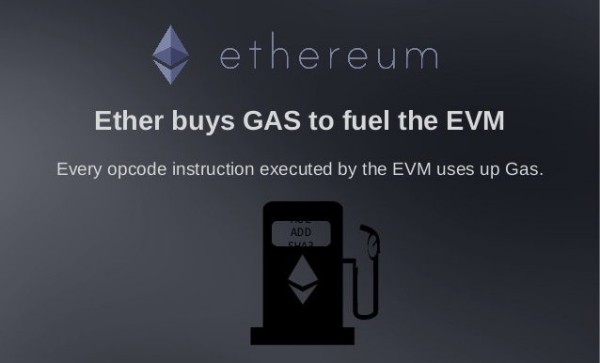
Simplifying verification
Can you log in more conveniently, and protect your account with blockchain?
It’s possible to recreate keys by randomly typing digits when an attack predicts the value or range of random digits. Aside from this, it is possible.
Recent online games have implemented various verification methods to avoid account piracy. Companies are putting their utmost efforts to protect customers’ personal information and digital assets with mobile device verification, first password, the second password, in-game minigames for verification purpose, and private firewalls.
This troubling process can be eased with blockchain verification technology. Although blockchain itself is not a means of verification, it can prevent falsification if a user saves a certificate on it.
In fact, the purpose of certificates is to prevent the reckless use of additional features such as identification. With the data used for verification, for example, a company can check the validity and integrity of a public key, and check or record the history of an issued certificate. Upon verification, the network sends details that only the developer can check. A user can log into the game with a registered key afterward.
The current certificate is a digital signature technology that uses PKI and uses asymmetric cryptography with public and private keys. This is the same for blockchain as well. The blockchain network uses asymmetric passwords and creates a group of identifications for an account so that only a scrip owner can send a scrip. The reason why it is asymmetric is that each party holds one key for everyone that mathematically matches each other, even though two parties who conduct a transaction with each other are different individuals.
Also, when a user plays multiple games from another company, there will be no need to log in multiple times if those games adopt the blockchain network. A developed certificate with an international certificate standard size (X. 509) in the blockchain will get rid of this problem.
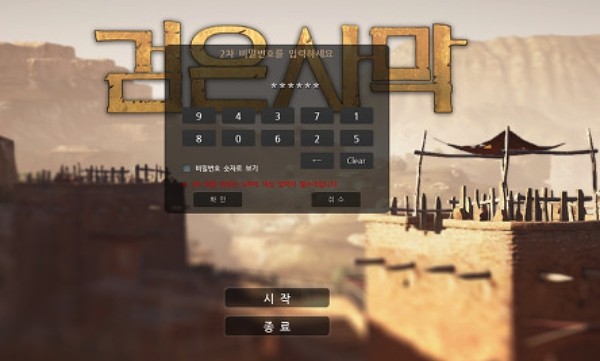
Preventing item duplication
Can it prevent the duplication of in-game items?
Although it is theoretically possible, it is not available now, because the size of data that can be occupied in the blockchain must be less than 1MB.
Item duplication has always been an issue with video games. In particular, most cases were in online games which use a server-client system, but this can possibly be decreased with blockchain, in theory.
Generally speaking, it is possible to secure the inheritance of an item through the blockchain, as it is impossible to duplicate digital products in it. Falsification is also impossible with the double-spending prevention technology.
Double-spending is an act of transferring money to more than two accounts simultaneously with a malicious intention, and The Longest Chain Wins mechanism is used to prevent this.
In the case of Bitcoin, the system recognizes an error if the number of coins exceeds 21 million. When a duplicated payment occurs in the forked blockchain, the system creates a new block in advance and goes with whichever chain becomes longer.
For example, a user with item A will add more blocks to the blockchain A, and a user with a duplicated item A-1 will add more blocks to the blockchain A-1. Blocks added to blockchain A cannot be accepted in the blockchain A-1 because the hash value of the previous blocks is deemed different.
After some time, the longer blockchain indicates that more users participated, and the shorter blockchain has a high chance of being an impure group. At the point where the length of the chains becomes different, the network accepts the longer blockchain and combines them to be one again.
It is also possible to check duplication with time measurement. Scrips like ETH from Ethereum share a similar feature with a tree’s annual ring. The generation speed cannot be increased as they are done through mathematical procedures.

Mistakes with events and tracing an item
If all data is inherent, is it possible to reclaim an event item that has been wrongly provided?
Yes. If you know a public key, you can check the data of a transaction and data that enters and leaves an account in the blockchain. A user can combine the pattern of transactions which has that user’s activity history. In fact, the American Federation has implemented machine learning in transaction data in order to interpret spending patterns of black market sites such as AlphaBay.
Even though it’s anonymous, anyone can publicly check a transaction, aka the movement of data, because you can check all transactions as long as you know the other’s public key.
Many developers, even those with experience, repeat many mistakes when they run an event. An item is provided additionally, limitlessly, or to someone who is not supposed to receive it. They normally claim it back, but it’s not an easy task to check every transaction of numerous items and reclaim them all.
With blockchain, a company can operate collectively with smart contracts, minimizing the number of claims by users and conducting fair reclamations.
Also, data that has not been falsified can be used as evidence for a company to ban users who gain an unfair advantage with an event bug, or for a banned user to prove his/her innocence.
Balancing the in-game economy
Can it balance an economic structure with scrips?
Partially, yes. The economic balance in MMORPGs is very important and difficult at the same time. When a producer intervenes or lets the market naturally flow in an economy that is already running, that can partially result in economic failures in the real world.
Pearl Abyss, therefore, balances the economy of Black Desert Online with perfect control, and games with random loot boxes attempt to maintain it with random currency.
In a blockchain network, a user can evaluate the true value with a scrip, allowing them to balance the economy relatively easier. In addition, the speed of issuing in-game currency can be checked by numbers, which helps maintain user retention.
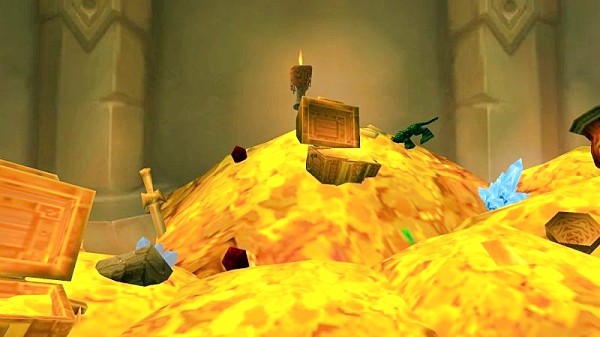
Providing a new user experience
Can it provide a completely new user experience?
It is possible, but not certain whether it would be positive or negative. The current centralized game experience has a couple of features compared to the blockchain experience - control over rules, control over transactions, and control over access.
Control over rules indicates that a consumer can only do a transaction with an authorized item and services. SuperData Research anticipates that the value of opposing virtual black market is more than 6 billion dollars.
Control over transactions is mainly with a commission. A user cannot claim maximum value due to the existence of commission. For example, in the case of Second Life, a user must pay 5% commission to the system when they exchange every item. Control over access means that a centralized platform administrator can always restrict access of all users at any time.
A blockchain network-based game eliminates these limitations and makes it possible for a gamer to control their own experiences. In fact, FirstBlood is providing benefits through smart contracts, and Decentraland, the VR version of Second Life, is offering a different user experience by developing on the VR platform using blockchain.
The problem is that the blockchain UX has not been resolved yet. The security and UX are a double-edged sword, thus you need to give up on one of them. The blockchain is a pure backend technology and is not visible, so it needs to be understood mathematically only with console and logic in order to be verified, but there is no way of actually seeing and feeling it at the moment.
Above all, it has a critical operational disadvantage, which is that isolation and sanctions are difficult to run when it is implemented in the game.

An encounter between blockchain and gaming?
For now, games cannot and do not need to have blockchain. There is no technology that can replace the server. The speed is slow too.
However, a distributed ledger based on a blockchain network can result in more rich and comprehensive records compared to selective records based on an internal system and blacklist.
But, it does not mean that data must be part of the blockchain. If an image is attached as part of the record, the data size drastically increases and that leads to a network overhead. In the case of CryptoKitties, it used to control transactions in the Ethereum network when it was popular. It showed one of the limitations of the blockchain.
Moreover, security, which is known as the biggest advantage, is not perfect yet. For example, Solidity lacks many technical aspects as it does not support the use of decimal points, and a user needs to bypass or restart the whole process in order to do so.
According to the report “Ethereum Contracts are Going to be Candy for Hackers” by Peter Vessenes in May 2016, the number of Ethereum smart contract template codes released on the internet have critical points. In the case of the DAO incident in June 2016, 59 million dollars were transferred due to a weak point of a smart contract code.
As you can see, a combination of current games and blockchain is likely too premature. However, it still has the potential to open a new market from a distribution perspective. It has the potential to open a new way of investment, and materialization as well, assuming that the law changes in the future.
As the internet was introduced to the public and has evolved to become what it is now, blockchain can also walk the same path. Not only does it verify certificates, but it is advancing to become a platform itself.
More to Read: Dynasty is bleeding and the Outlaws are out for blood
Sort by:
Comments :0




